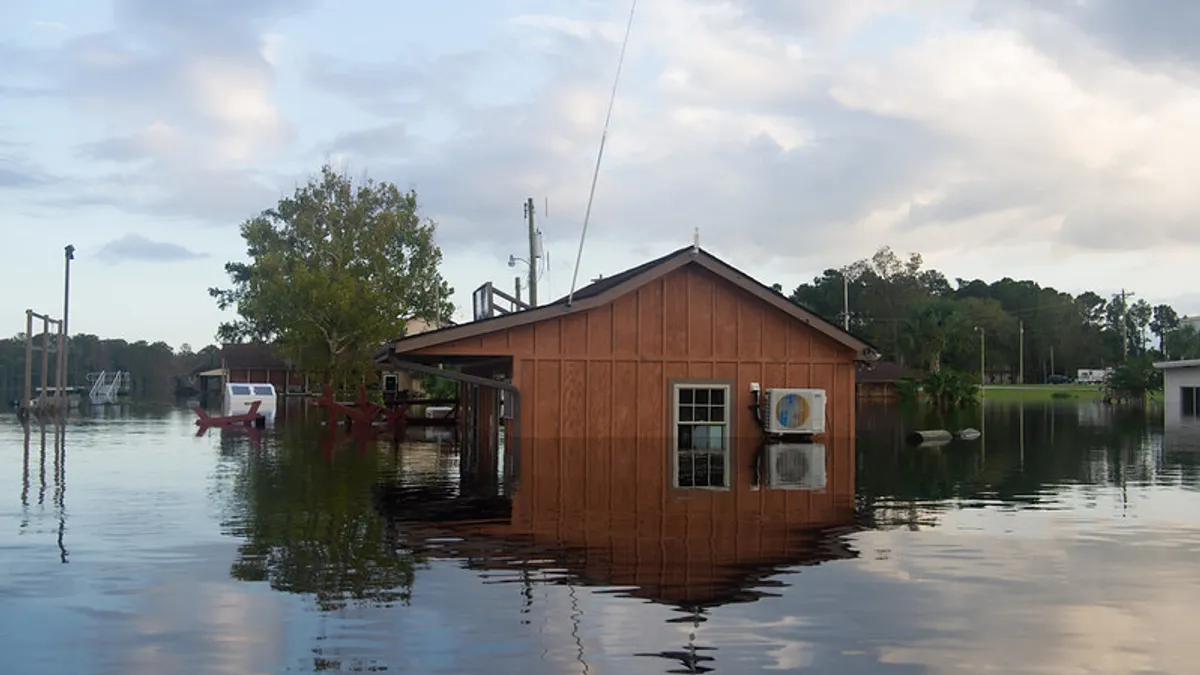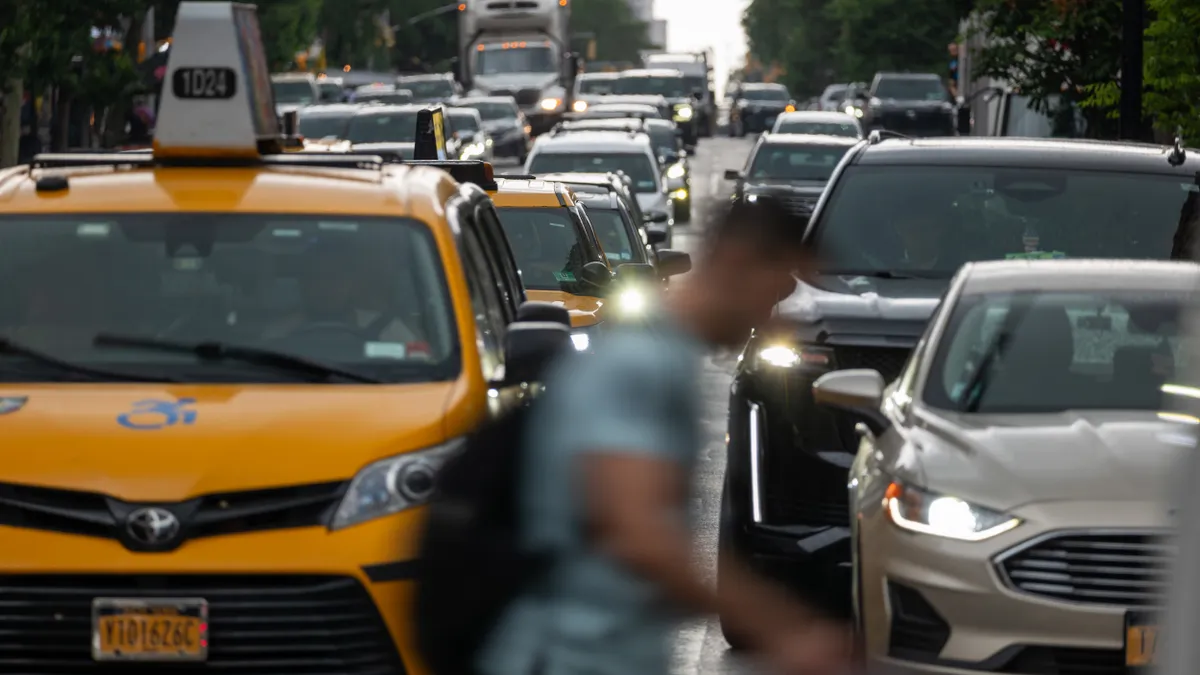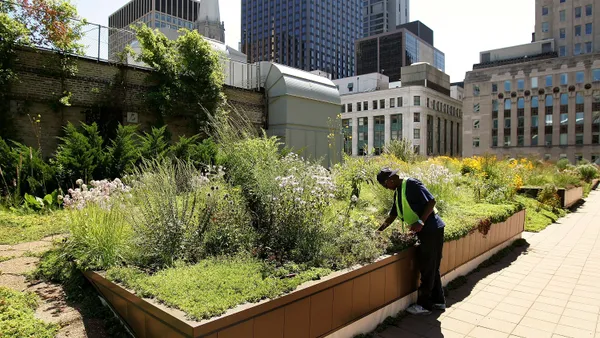Dive Brief:
- About 43% of global cities lack a plan for adapting to climate change issues, yet 93% say their people and infrastructure are at risk from climate change, according to a report from nonprofit CDP that assembled self-reported environmental data from 800 cities worldwide. In the U.S., where 169 cities reported data, 40% do not have a climate adaptation plan.
- Funding is one key obstacle, with 25% of reporting cities saying budgetary constraints are a main barrier to their making progress on climate adaptation measures.
- CDP reports a 17-time increase in cities disclosing their data in 2020, compared with the first report in 2011. Data reporting is just the first step on the journey, according to Katie Walsh, CDP North America head of cities, states and regions. "The next step after you identify risk is actually developing an adaptation plan. We want all cities that are identifying risks to have associated adaption plans. The 60% number says that we're on our way," she said.
Dive Insight:
CDP provides a platform for cities to disclose, measure and manage their environmental data to build resilience and sustainable economies. It reportedly has the most comprehensive global collection of self-reported environmental data from cities, corporations and investors.
Some of the climate-related hazards that cities say put citizens at risk are extreme heat, increasing extreme storms, flooding, drought and air pollution. Sixty percent of cities are facing risks to their water security. In fact, water supply and sanitation is the city services category most reported to be affected by climate change, followed by public health, environment/forestry, residential and transportation.
Neglecting to properly address these areas with a climate adaptation plan comes with a financial cost as well. The U.S. sustained 22 distinct billion-dollar weather and climate disasters in 2020 that collectively racked up $95 billion in damage to homes, businesses and infrastructure, the American Jobs Plan notes.
Those costs are vexing to cities, particularly as they regularly cite funding shortfalls even without climate adaptation projects. The Biden administration's $2.3 trillion American Jobs Plan, however, could provide a major boost not only for cities' infrastructure, but also for their sustainability and resilience plans. The plan includes $174 billion for electric vehicle infrastructure, $100 billion for power grid improvements, $46 billion in clean energy manufacturing and $35 billion for research into technology that addresses climate change.
"They can't do it alone. It will come down to engagement and support... and it's going to need to be a coordinated effort," Walsh said.
CDP's data disclosure work also helps identify the projects for which cities are seeking financing. In 2020, 97 U.S. cities identified 304 projects worth $25 billion. Transportation was the top sector. About half of the project costs were $5 million or under, which indicates that with just a little help, cities can make critical interventions and investments to tackle climate risk and adaptation, Walsh said.
"These projects showcase a huge opportunity for sustainable infrastructure investment," she said. "If we are going to be putting dollars forward, let's not further lock in highly carbon-intensive projects. Let's use these dollars for green infrastructure opportunities... We can accelerate investment in the green economy."
The report notes that buildings, transportation, energy and waste are key areas that have the greatest potential for emissions reductions in most cities. But as of last year, only 50% of cities are optimizing building energy use; 42% are addressing transportation emissions; 34% are working to decarbonize the electricity grid and 33% are improving waste operations. "Our data shows there is still a gap between what is needed and what cities are doing," the report says.
Meanwhile, the top five actions cities are taking to increase their resilience are tree planting/creating green space, flood mapping, community engagement/education, developing crisis management plans and developing hazard-resistant infrastructure.
Despite the progress, only 169 of the thousands of U.S. cities currently disclose their data to CDP, which is a sign that "we have many more cities and counties to engage with to make sure they're adapting to climate change," Walsh said.
New city climate plans have been coming at a quick pace over the last five years, though. This month Jersey City, New Jersey, and Charleston, South Carolina, joined the pack, while Honolulu did so last year. Walsh also highlighted collaborative action in Florida, where Tampa, St. Petersburg and Orlando committed to climate action plans, waging a friendly competition and sharing best practices on a race to net-zero emissions.
San Diego is also in the process of developing a climate resilience plan to build on its climate action plan from six years ago. One goal of San Diego's resilience plan is to prioritize adaptation strategies in areas where residents are more vulnerable to the effects of climate change but have fewer resources.
As far as holding cities to their climate commitments, Walsh said CDP's reporting process serves as that accountability and transparency measure by presenting a standardized comparison and tracking resource.












